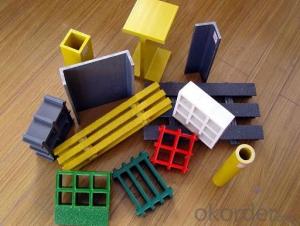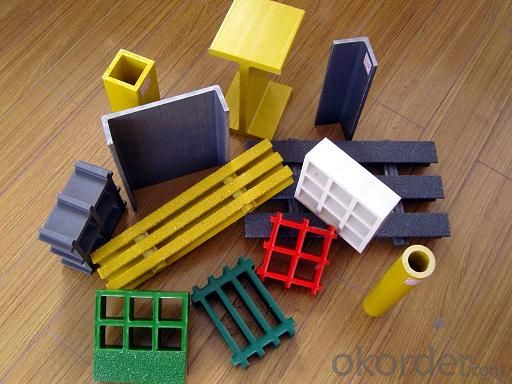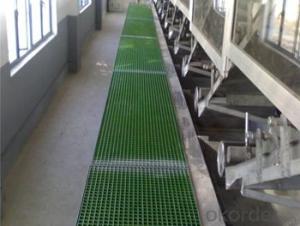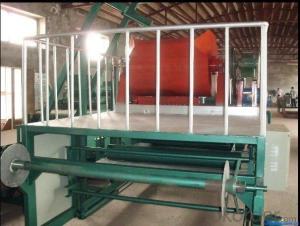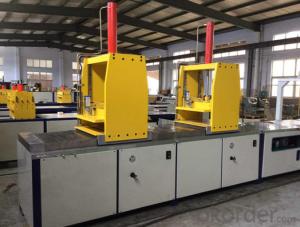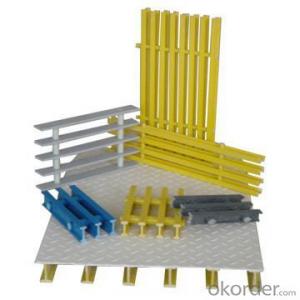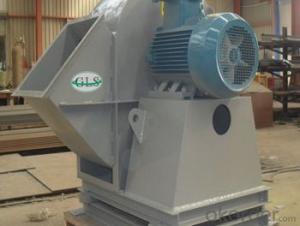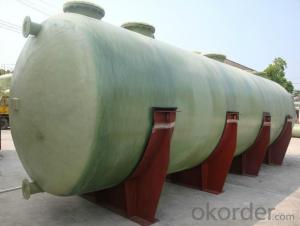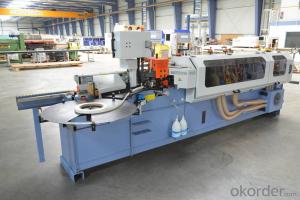FRP Pultrusion Profiles - Anti-Ageing High Quality FRP Pultruded Gratings
- Loading Port:
- Tianjin
- Payment Terms:
- TT OR LC
- Min Order Qty:
- 4000 m.t.
- Supply Capability:
- 50000 m.t./month
OKorder Service Pledge
OKorder Financial Service
You Might Also Like
Specification
FRP PULTRUDED GRATING AND PULTRUSION PROCESS
PRODUCT DESCRIPTION
Pultruded grating is made by a particular assembly process, which using “I” shape as its main load-bearing and special rod to go through the bearing bar. Pultruded grating include the standard grating and the custom grating, the custom grating can be designed to meet customer’s requirement or special using condition by changing the shape, size and space of the bearing bars, the surface can be covered with lozenge panel, grit panel, or added the anti-slippery sand directly.
FRP pultruded grating has the most characteristics of molded grating, but it has its distinct advantages, it has very high fiberglass content in the loading direction, so it has very high load capability, it has more superiority when used at wide span, so that the basic support will be decreased and the project cost will be reduced accordingly.
SPECIFICATION
The standard space between two crossbars is 6 inch or 12 inch.
Thickness (mm) | Bar width (mm) | Open space (mm) | Open rate (%) | Approx weight (kg/m |
25.4 | 15.2 | 22.8 | 60 | 13.2 |
25.4 | 15.2 | 15.2 | 50 | 15.9 |
25.4 | 15.2 | 10.1 | 40 | 18.5 |
25.4 | 40 | 10.8 | 21 | 14.5 |
38.1 | 15.2 | 22.8 | 60 | 15.8 |
38.1 | 15.2 | 15.2 | 50 | 19.1 |
38.1 | 15.2 | 10.1 | 40 | 22.4 |
50.8 | 25.4 | 25.4 | 50 | 16.6 |
50.8 | 25.4 | 12.7 | 33 | 21.1 |
CHOICE FOR PULTRUDED GRATING
Resin: GP resin, ISO resin, VE resin, Phenol resin
Color choice: Yellow, gray, green, custom color
Surface choice: Groove surface, grit surface, lozenge cover surface
FEATURES
a. Anti-corrosion and anti-rust
b. Light weight and high strength
c. Anti-flammable
d. Anti- fatigue
e. Safe and anti-slippery
f. Anti-ageing
g. Easy of maintenance
h. Excellent electromagnetism property
i. Good economic benefit
FIELDS SERVED
Sewage treatment,
water supply and drainage,
chemical industry,
oil industry,
power engineering,
pulp and paper,
construction engineering,
spinning, marine engineering.
APPLICATION
Operation terrace,
stair walkway,
ground floor,
trench cover.
COMPANT DESCRIPTION
CNBM,China National Building Materials Group is a state-owned enterprise in charge of administrative affairs in china building materials industry. Established in 1984, CNBM is a large group corporation of building materials with total assets of 25 billion RMB and a total staff of 30,000.CNBM now owns 200 subordinating firms of solely owned and joint-venture companies.
CNBM International Corporation is one subsidiary of CNBM, we focus on offering good-quality products,professional service and complete solution to our customers. Strong delivery capacity, advanced technology& management, strong financing capability and excellent after-sale service are our advantages in sharing international market.
FAQ
1.Q:Are you factory or trading company ?
A:We are Factory produce FRP machines and FRP products.
2.Q:If can customized by customers requirements?
A:yes,we can produce the machine with customized size.
3.Q:How about the payment?
A:We accept any kind of payment.
4.Q:What is the guarantee?
A:Gurantee is one year.
5.Q:If you can training?
A:yes ,we can training in our factory also can send engineers to your factory training.
PICTURES
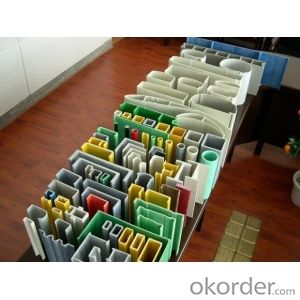
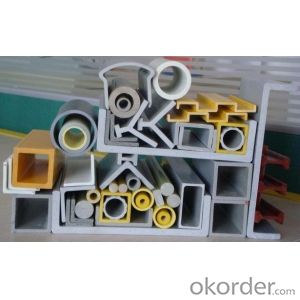
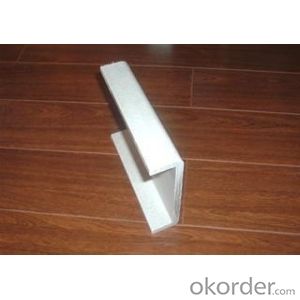
- Q: What is the lifespan of FRP pultrusion profiles?
- The lifespan of FRP (Fiber Reinforced Polymer) pultrusion profiles can vary depending on several factors. Generally, FRP pultrusion profiles have a long lifespan and are known for their durability and longevity. One key factor that influences the lifespan of FRP pultrusion profiles is the quality of the materials used in their construction. High-quality FRP materials, such as those made with premium resins and high-strength fibers, tend to have a longer lifespan compared to lower-quality materials. Additionally, the environmental conditions in which the FRP pultrusion profiles are installed can impact their lifespan. Exposure to extreme temperatures, moisture, UV radiation, chemicals, and mechanical stresses can all affect the performance and lifespan of FRP profiles. Therefore, proper installation and maintenance are crucial to ensuring their longevity. When properly designed, manufactured, and installed, FRP pultrusion profiles can have a lifespan ranging from 25 to 50 years or even longer. However, it is important to note that this estimate can vary depending on the specific application, the level of exposure to harsh conditions, and the overall care and maintenance of the profiles over time. Regular inspections, cleaning, and repairs, if necessary, can help extend the lifespan of FRP pultrusion profiles. Consultation with manufacturers or industry experts can provide more specific information on the expected lifespan of FRP profiles for a particular application or environment.
- Q: Are FRP pultrusion profiles resistant to hail or impact damage?
- FRP pultrusion profiles exhibit exceptional resistance to both hail and impact damage. The incorporation of reinforcing fibers such as carbon or glass, along with a polymer resin matrix, grants these profiles unparalleled strength and durability. When compared to materials like wood, steel, or aluminum, FRP pultrusions offer significantly superior impact resistance. These profiles are specifically engineered to endure even the harshest environmental conditions, including hailstorms. The composite composition of FRP enables it to effectively absorb and distribute the energy generated by impacts, effectively preventing the formation of cracks or fractures. As a result, they are an ideal choice for various applications that necessitate protection against hail or impact damage, such as building facades, bridges, handrails, and utility poles. Moreover, FRP pultrusion profiles possess an impressive strength-to-weight ratio, meaning they can withstand heavy impacts without undermining their structural integrity. Furthermore, they are non-corrosive, making them impervious to rust or degradation caused by hail or impact. To summarize, the composite construction and exceptional strength-to-weight ratio of FRP pultrusion profiles render them highly resistant to hail or impact damage. They offer a reliable and long-lasting solution for applications that demand durability and resilience in the face of harsh environmental conditions.
- Q: Can FRP pultrusion profiles be used in agricultural structures?
- Agricultural structures can indeed utilize FRP pultrusion profiles. FRP pultrusion profiles, also known as Fiber Reinforced Polymer profiles, possess numerous advantages that render them suitable for agricultural purposes. To begin with, the corrosion resistance of FRP profiles is of utmost importance in the agricultural industry, given the exposure of structures to harsh environments and chemicals like fertilizers and pesticides. Unlike conventional materials such as steel or wood, FRP does not rust or decay, ensuring enduring performance in agricultural structures. Furthermore, FRP profiles are lightweight yet durable, facilitating easy handling and installation in agricultural applications. Their high strength-to-weight ratios enable efficient construction, thereby reducing the necessity for heavy machinery during the installation process. Moreover, FRP profiles exhibit exceptional mechanical properties, including high stiffness and impact resistance, which prove advantageous for agricultural structures subjected to heavy loads, vibrations, or machinery impact. In addition, FRP pultrusion profiles can be designed to resist UV radiation, thereby preventing degradation from prolonged exposure to sunlight. This quality makes them suitable for outdoor agricultural structures consistently exposed to the elements. Lastly, FRP profiles are non-conductive, a critical advantage in agricultural environments where electrical safety is paramount. This characteristic eliminates the risk of electrical hazards associated with conductive materials like steel. In summary, FRP pultrusion profiles offer a reliable and efficient solution for a variety of agricultural structures, such as greenhouse frames, livestock enclosures, irrigation systems, and storage facilities. Their corrosion resistance, lightweight nature, high strength, UV resistance, and non-conductivity make them an ideal choice for agricultural applications.
- Q: What is the shear strength of FRP pultrusion profiles?
- The shear strength of FRP pultrusion profiles can vary due to multiple factors, including the quality and type of fibers, the resin matrix, and the manufacturing process. FRP pultrusion profiles generally possess high shear strength because of the continuous fibers that run along their length. To determine the shear strength of FRP pultrusion profiles, industry standards like ASTM D2344 or ISO 14129 are commonly employed for testing. These tests involve subjecting the profile to a shear force until it fails, allowing for the calculation of shear strength. The exact shear strength values for FRP pultrusion profiles can differ significantly based on their specific composition and design. However, it is not uncommon for these profiles to exhibit shear strengths of 50-150 MPa or higher. Consequently, they are suitable for a broad range of structural applications that involve shear forces. It is worth noting that the shear strength of FRP pultrusion profiles can be affected by factors such as temperature, moisture, and exposure to chemicals. Therefore, it is crucial to consider the environmental conditions and application requirements when selecting the appropriate FRP profile. Overall, FRP pultrusion profiles are renowned for their exceptional shear strength, which contributes to their widespread use and effectiveness in industries like construction, transportation, and infrastructure.
- Q: Can FRP pultrusion profiles be used in pedestrian bridges?
- Yes, FRP pultrusion profiles can be used in pedestrian bridges. FRP pultrusion profiles offer a number of advantages that make them suitable for bridge construction, including their high strength-to-weight ratio, corrosion resistance, and durability. These profiles are made by pulling continuous fibers through a resin bath and then through a heated die, resulting in a strong and lightweight material. The lightweight nature of FRP pultrusion profiles makes them ideal for pedestrian bridges as they can be easily transported and installed. Additionally, their high strength allows them to withstand the load requirements of pedestrian traffic. These profiles also have excellent resistance to corrosion, which is especially important for bridges that are exposed to environmental elements such as rain, humidity, and saltwater. Furthermore, FRP pultrusion profiles are highly durable and require minimal maintenance compared to traditional construction materials like steel or concrete. They are not susceptible to rust or rot, and their non-conductive properties make them safe for use in areas with electrical infrastructure. In summary, FRP pultrusion profiles are a suitable choice for pedestrian bridges due to their lightweight, high strength, corrosion resistance, and durability. These profiles offer a cost-effective and long-lasting solution for bridge construction, ensuring the safety and convenience of pedestrians.
- Q: Are FRP pultrusion profiles resistant to oils and greases?
- Yes, FRP pultrusion profiles are generally resistant to oils and greases. The combination of fiberglass reinforcement and resin matrix in FRP pultrusions provides excellent resistance to various chemicals, including oils and greases. This makes them suitable for applications where exposure to oils and greases is expected.
- Q: Are FRP pultrusion profiles fire resistant?
- Yes, FRP pultrusion profiles are fire resistant.
- Q: Are FRP pultrusion profiles resistant to moisture absorption?
- FRP pultrusion profiles possess remarkable resistance to moisture absorption, primarily due to the composition of the materials used in their construction. These profiles typically consist of a combination of fiberglass and resin, wherein fiberglass is naturally non-porous and impervious to moisture, while the resin is specifically designed to repel moisture. The moisture resistance of FRP profiles is further enhanced by the pultrusion manufacturing process. This process involves pulling the fiberglass and resin through a heated die, ensuring thorough impregnation of the fibers with resin and creating a dense and solid structure. Consequently, the resulting product exhibits exceptional resistance to water penetration and moisture absorption. Additionally, the moisture resistance of FRP pultrusion profiles can be augmented through the application of protective coatings or surface treatments, such as gel coats or UV-resistant finishes. These coatings provide an extra layer of defense against moisture ingress. The superior moisture resistance of FRP pultrusion profiles makes them an ideal choice for applications that involve exposure to water or high humidity, such as marine environments, wastewater treatment plants, or outdoor structures. By preventing issues like rot, rust, or degradation commonly associated with materials like wood or metal, these profiles offer a reliable and durable solution that can endure moisture exposure without compromising their structural integrity or performance.
- Q: Are FRP pultrusion profiles resistant to chemicals used in food processing?
- Yes, FRP pultrusion profiles are generally resistant to chemicals used in food processing. Fiberglass reinforced plastic (FRP) is known for its excellent chemical resistance, making it suitable for various industrial applications, including the food processing industry. FRP pultrusion profiles are composed of a combination of resins and fiberglass reinforcements, which provide them with inherent resistance to a wide range of chemicals. FRP pultrusion profiles are typically resistant to acids, alkalis, solvents, and many other chemicals commonly found in food processing environments. This resistance ensures that the profiles will not corrode, degrade, or react with the chemicals, preserving their structural integrity over time. This makes FRP pultrusion profiles a reliable choice for equipment, structures, and components used in food processing facilities. However, it is important to note that the specific chemical resistance of FRP pultrusion profiles can vary depending on the resin system used in their manufacturing. Different resins offer different levels of resistance to specific chemicals. Therefore, it is crucial to select the appropriate resin formulation that matches the specific chemical environment in the food processing industry. To ensure the compatibility of FRP pultrusion profiles with the chemicals used in food processing, it is advisable to consult with the manufacturer or supplier. They can provide detailed information on the chemical resistance properties of their FRP profiles and assist in selecting the most suitable materials for the specific application. Additionally, proper maintenance and regular cleaning practices should be implemented to ensure the longevity and continued chemical resistance of FRP pultrusion profiles in food processing environments.
- Q: Are pultruded FRP sections strong? What are its main areas of application?
- The tensile strength of products produced by pultrusion process is higher than that of ordinary steel.Widely used in transportation, electrical, electrical, electrical insulation, chemical, mining, marine, watercraft, corrosive environment and life, civil areas.
Send your message to us
FRP Pultrusion Profiles - Anti-Ageing High Quality FRP Pultruded Gratings
- Loading Port:
- Tianjin
- Payment Terms:
- TT OR LC
- Min Order Qty:
- 4000 m.t.
- Supply Capability:
- 50000 m.t./month
OKorder Service Pledge
OKorder Financial Service
Similar products
Hot products
Hot Searches
Related keywords

